The Dashing Retro Allure of the Eberhard & Co. Chronographe 1887 Édition Limitée
Inspired by Eberhard’s innovative 1930s chronographs, this sophisticated flyback chronograph marries dashing vintage features with a contemporary manual-winding movement.
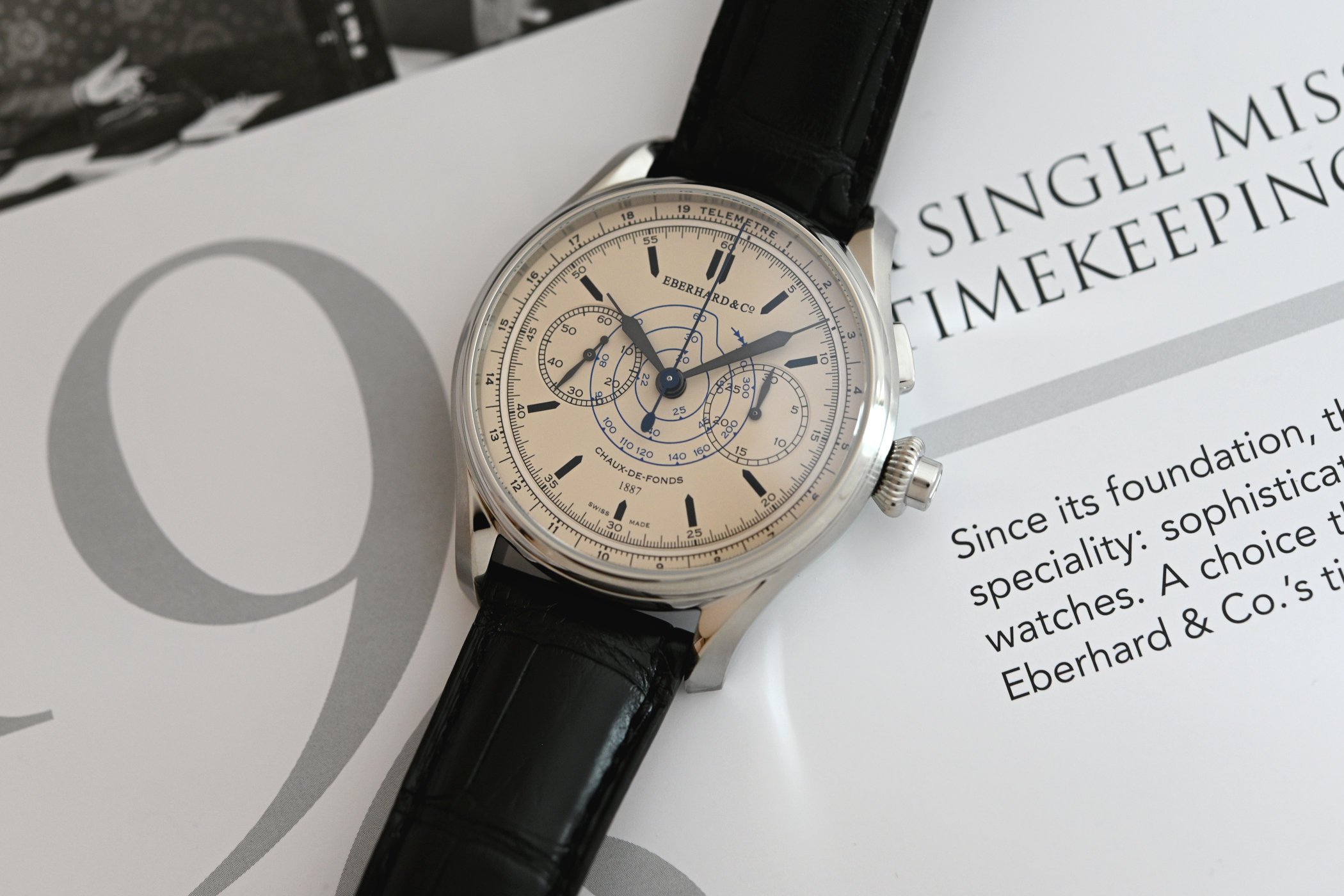
Founded by Georges Eberhard in 1887 in La Chaux-de-Fonds, Eberhard & Co. had established itself as a purveyor of innovative, technically advanced chronographs by 1919. Although the independent brand is well-known among Italian collectors, and its Chrono 4 model, with four separate counters inspired by the dashboard of race cars, might resonate with some readers, its rich chronograph history remains largely undiscovered by a wider audience. To address this gap, Eberhard created the 1887 collection inspired by historical chronographs on display in the brand’s museum. One of the most attractive retro-inspired models in the collection is the Chronograph 1887 Limited Edition. This sophisticated flyback chronograph, inspired by the brand’s chronographs of the 1930s, comes in a contemporary case size, is powered by a contemporary manual-winding movement and manages to cut a dashing retro-chic figure.
Eberhard’s mastery of wristwatch chronographs at the turn of the 20th century is up there with some of the better-known names such as Longines, Universal Genève, Lemania and Landeron. In 1919, Eberhard produced its first chronograph wristwatch, considered the most advanced single-pusher chronograph of its day. In 1935, the brand introduced an innovative double-pusher chronograph, offering stop and start functions without requiring a reset to zero. Three years later, Eberhard produced the first chronograph with an hour counter, followed in 1939 by its first split-seconds chronograph.
The muses behind the Chronograph 1887 Limited Edition models are Eberhard’s historical chronographs. While the dial replicates the layout, telemeter scale and central spiral of the 1935 chronograph, it is a synthesis, in a contemporary key, of the brand’s 1930s chronographs. The stainless steel case, for example, is a winning blend of old and new. The 41.5mm case size is distinctly contemporary, with a robust height of 13.9mm, sapphire crystals on both the front and back, and a depth rating of 50 metres. In contrast, the oversized crown has a vintage pilot’s watch vibe, and the lyre lugs a 1950s flair.
Flyback complications originated in the 1930s and were used by pilots to make rapid, successive time measurements during missions. The rectangular pusher above the crown is used to start and stop the chronograph. If the chronograph is stopped, the coaxial pusher inside the crown is used to reset it. However, if the chronograph is running, the pusher inside the crown activates the flyback function, and the central chronograph hand flies back to zero to start a new run of measurements.
Available in three dial colours, including salmon and black, we photographed the eggshell or off-white edition. All three dials adopt design features of the 1935 chronograph, with a peripheral telemeter scale and a curious blue spiral in the centre of the dial with chevrons on its tail, intersecting both counters. More than an attractive design feature, the numerals on the spiral (running from 20 to 400 km/h) correspond to the tachymeter scale.
One advantage of having a large case size is that there is ample room for the dial to showcase its charming retro character. Although not a highly demanded function on a chronograph today, the telemeter scale was once a vital ally in wartime theatres to calculate fire range in battle. Here, the telemeter/minutes scale is expressed in 1/5th-of-a-second readings. Separated by a steel ring, the central area of the dial has a classic bicompax layout with 30-minute elapsed times at 3 o’clock and running seconds at 9 o’clock. Aligned horizontally and intersected by the brand’s blue spiral, the sub-dials feature traditional black railroad tracks. The eggshell and semi-matte black dials use hour indices, while the salmon/bronze dial features Arabic numerals at 12 and 6 o’clock. Often used on vintage pilot watches, the syringe-style hour and minute hands have pointed tips for precision readings.
The manual-winding movement was developed in collaboration with Manufacture AMT, the high-end division of Sellita. Using a Sellita AMT5100 base, the manual-winding EB 280 calibre controls the flyback chronograph with a column wheel. Extensively modified, the movement features a special lever that allows the chronograph reset pusher to be displaced coaxially with the crown. Another bespoke touch is the shield-shaped bridge decorated with Côtes de Genève. Known as a poinçon de maître, or a maker’s mark, Eberhard registered its shield in 1892. With a frequency of 28,800vph, a robust 62-hour power reserve, the movement is further protected by an Incabloc anti-shock device, an anti-magnetic Nivaflex mainspring and features hacking seconds.
The three Chronographe 1887 references are paired with alligator leather straps and steel pin buckles. They are limited editions of 250 pieces per colour and retail for EUR 6,960.
For more information, please visit Eberhard-co-watches.ch.



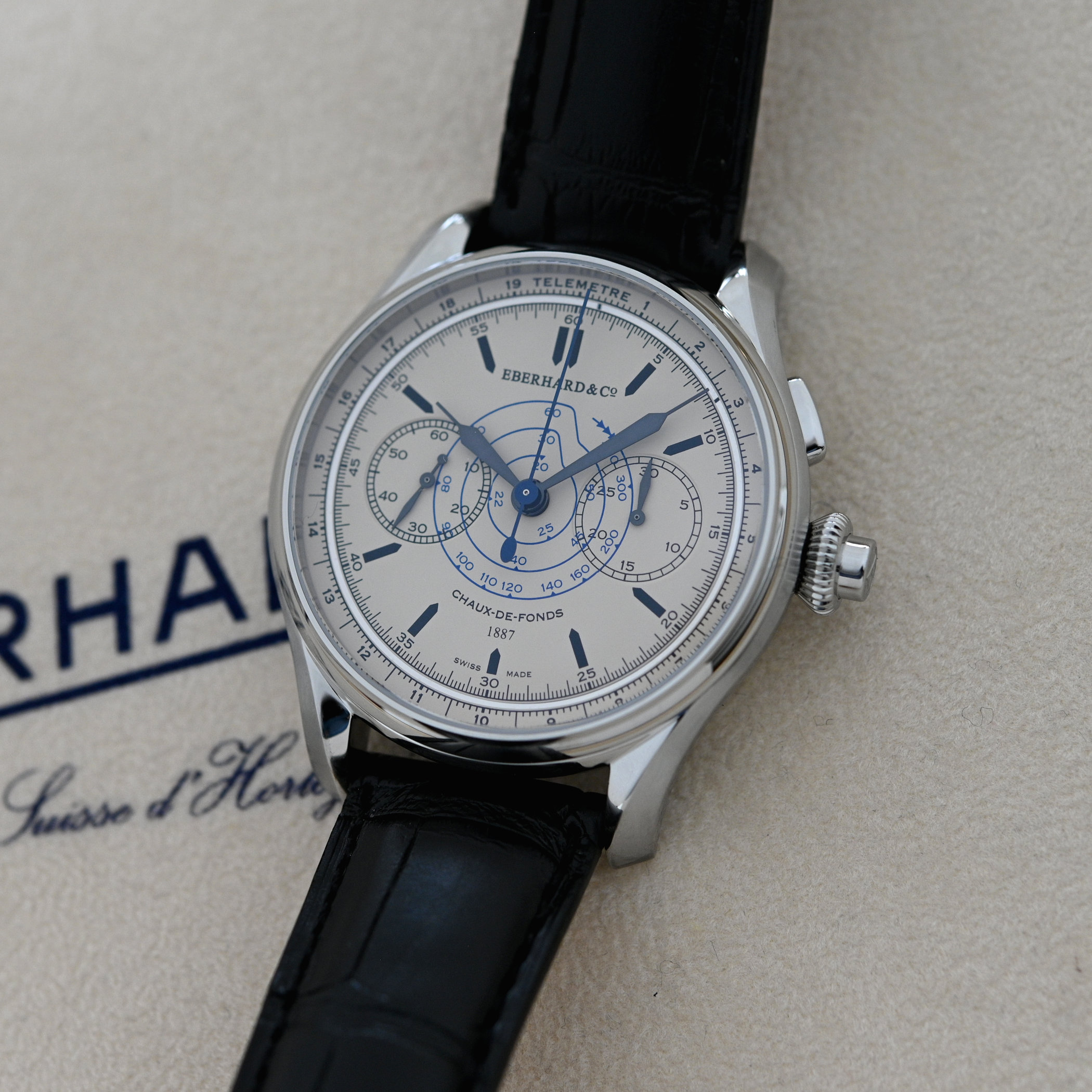
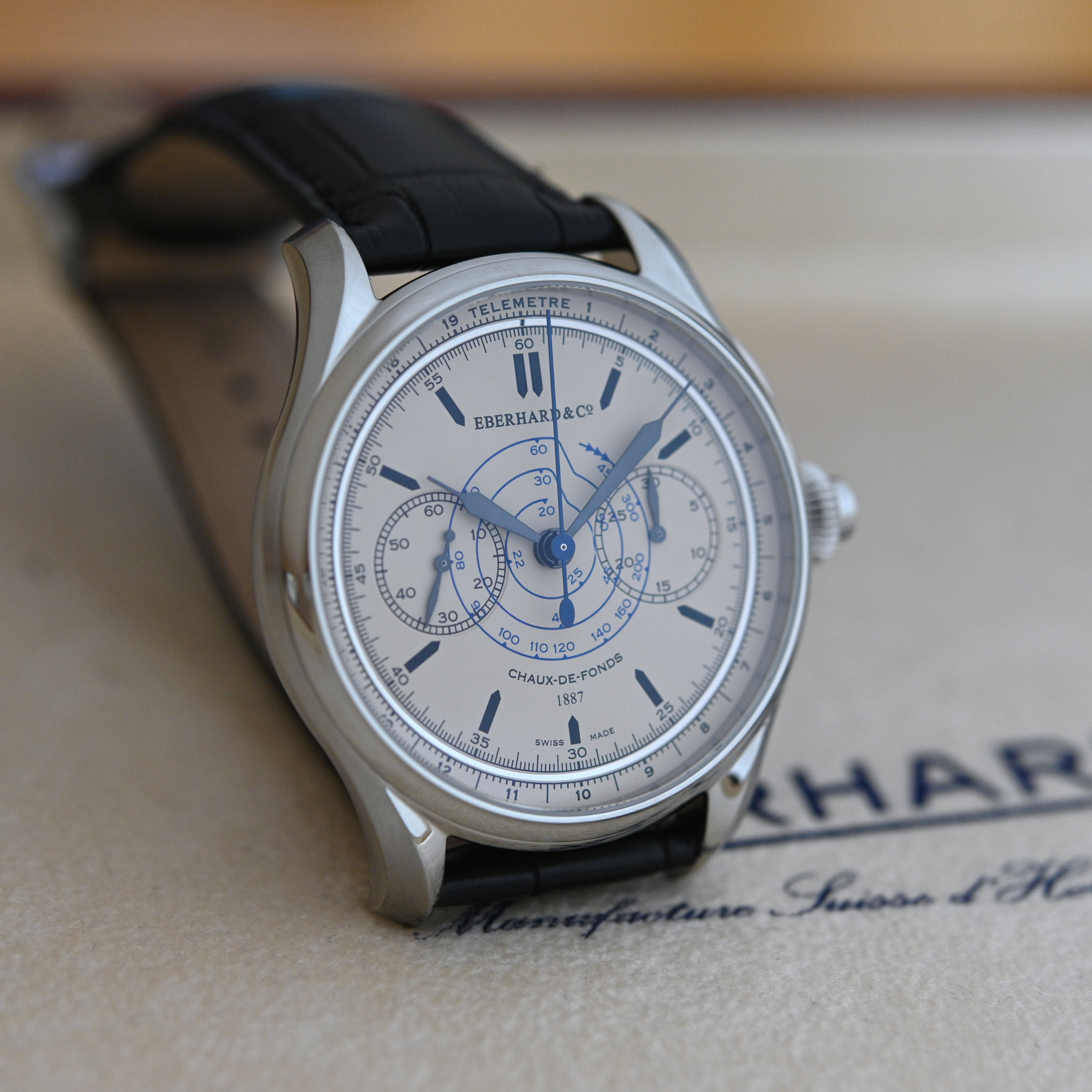
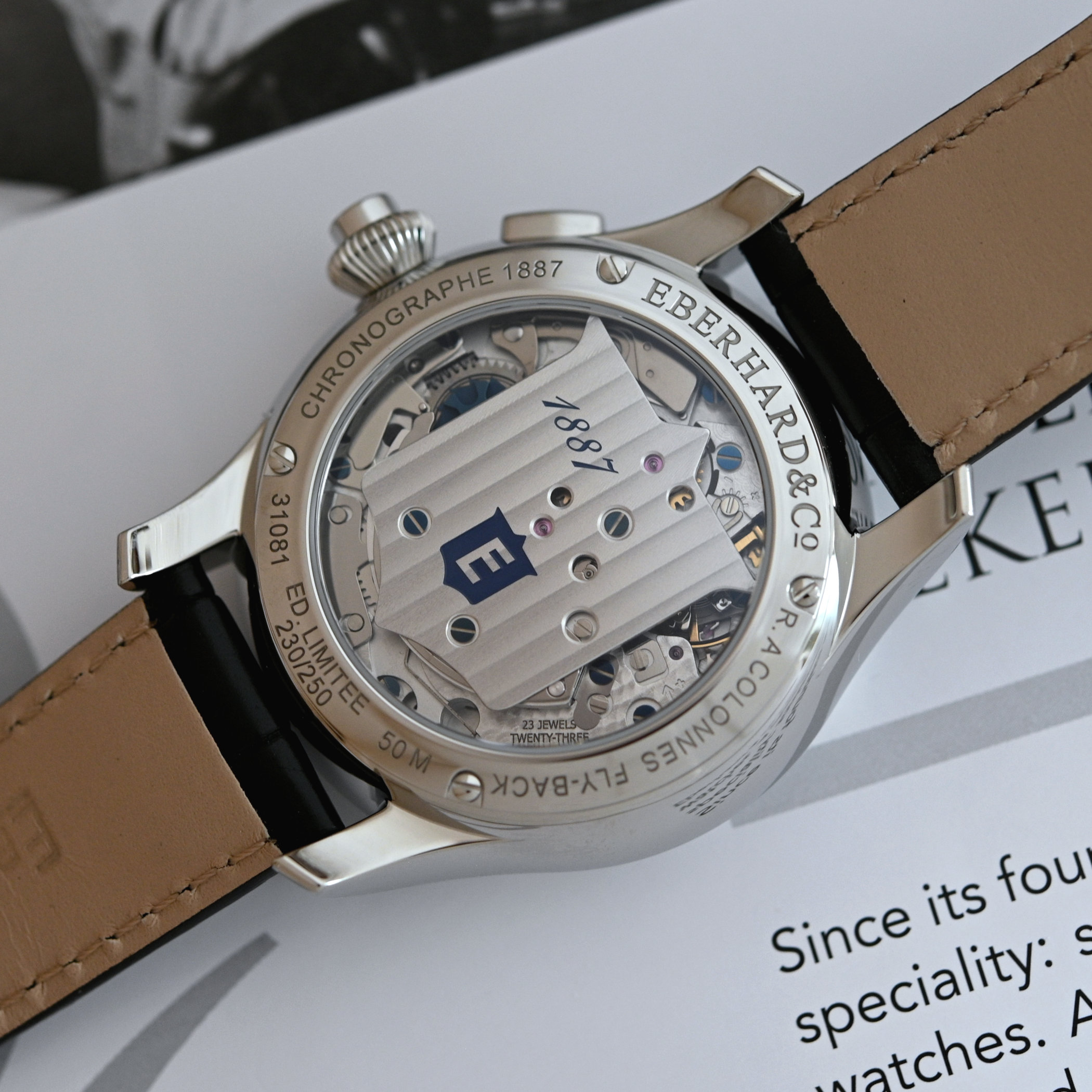



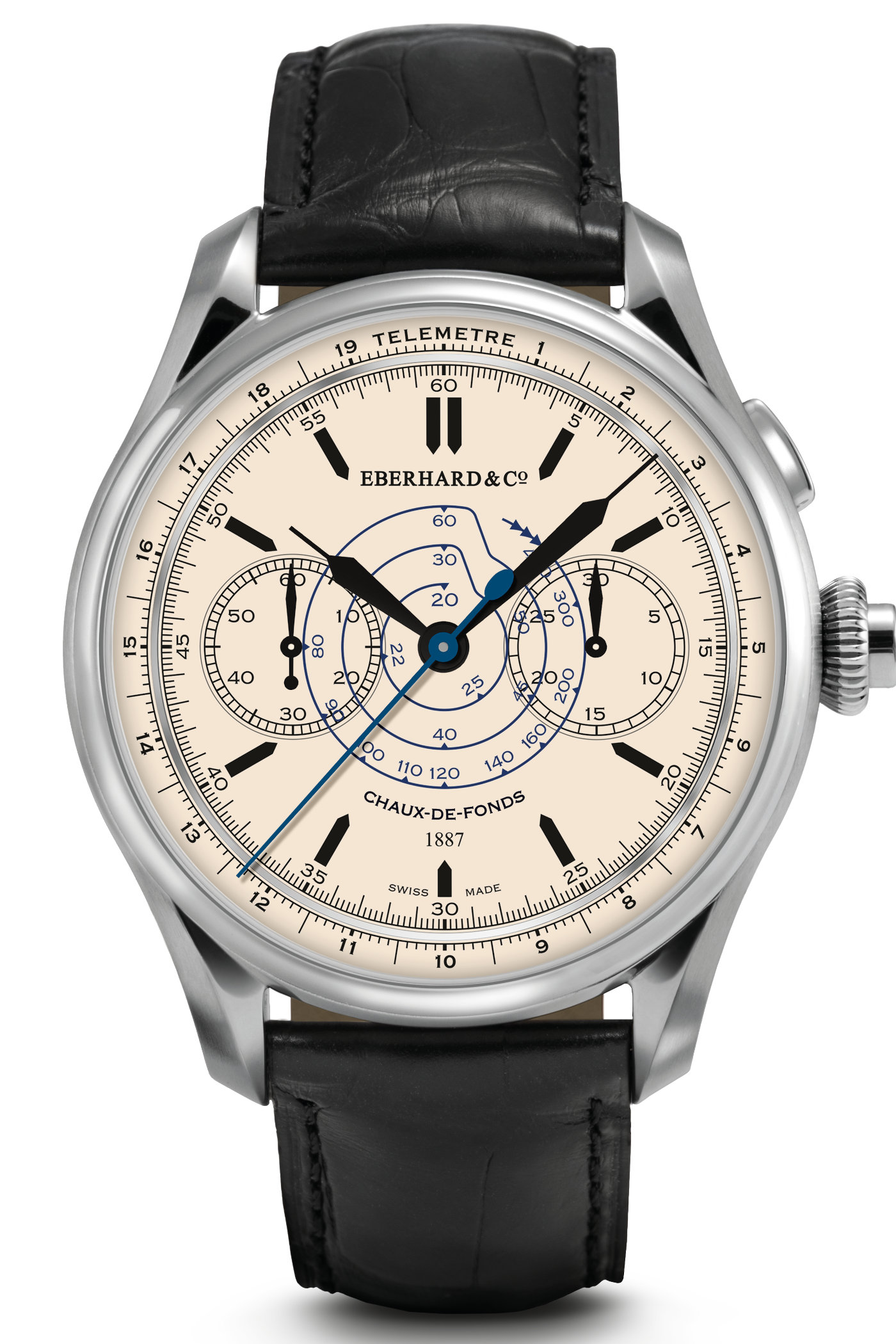
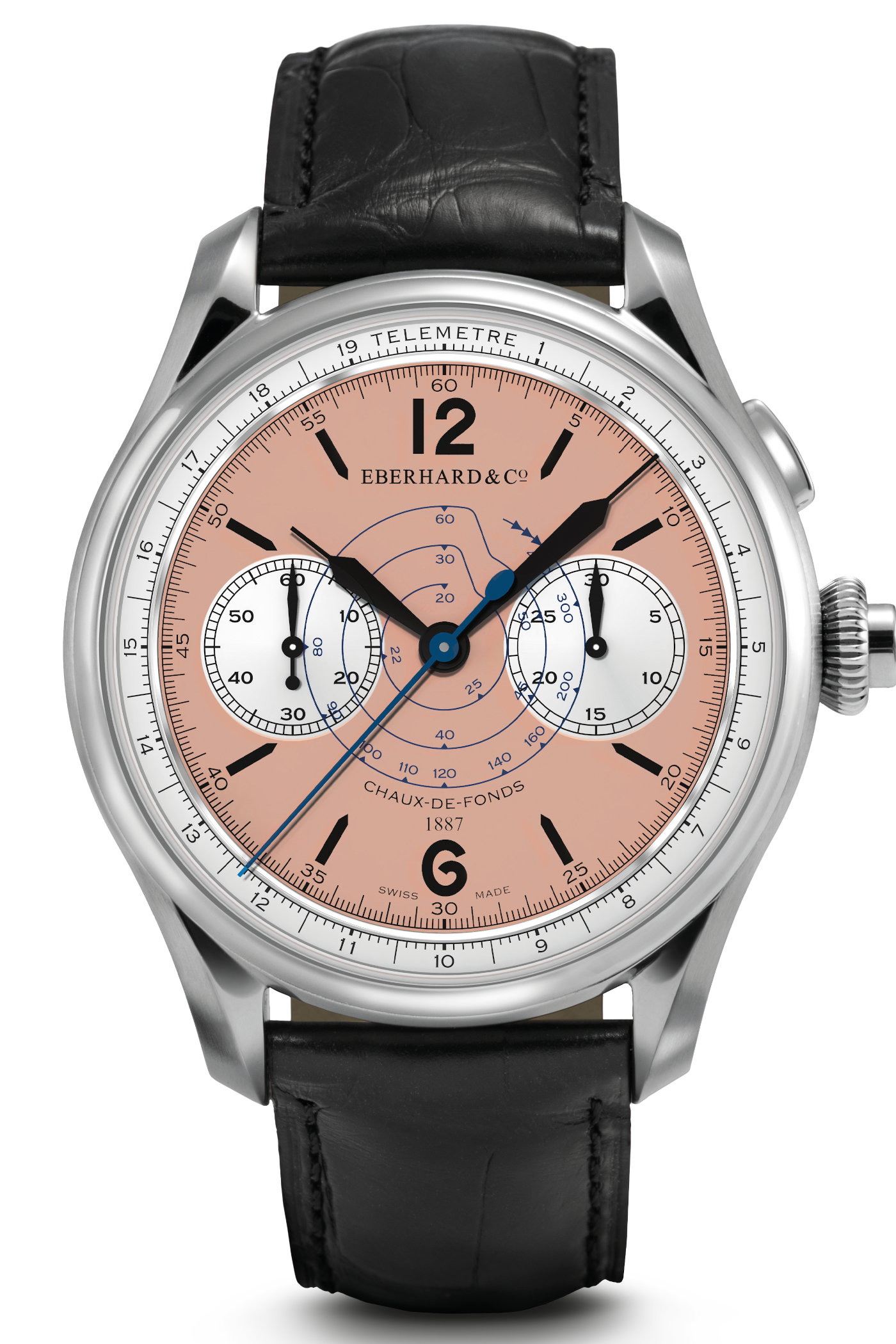
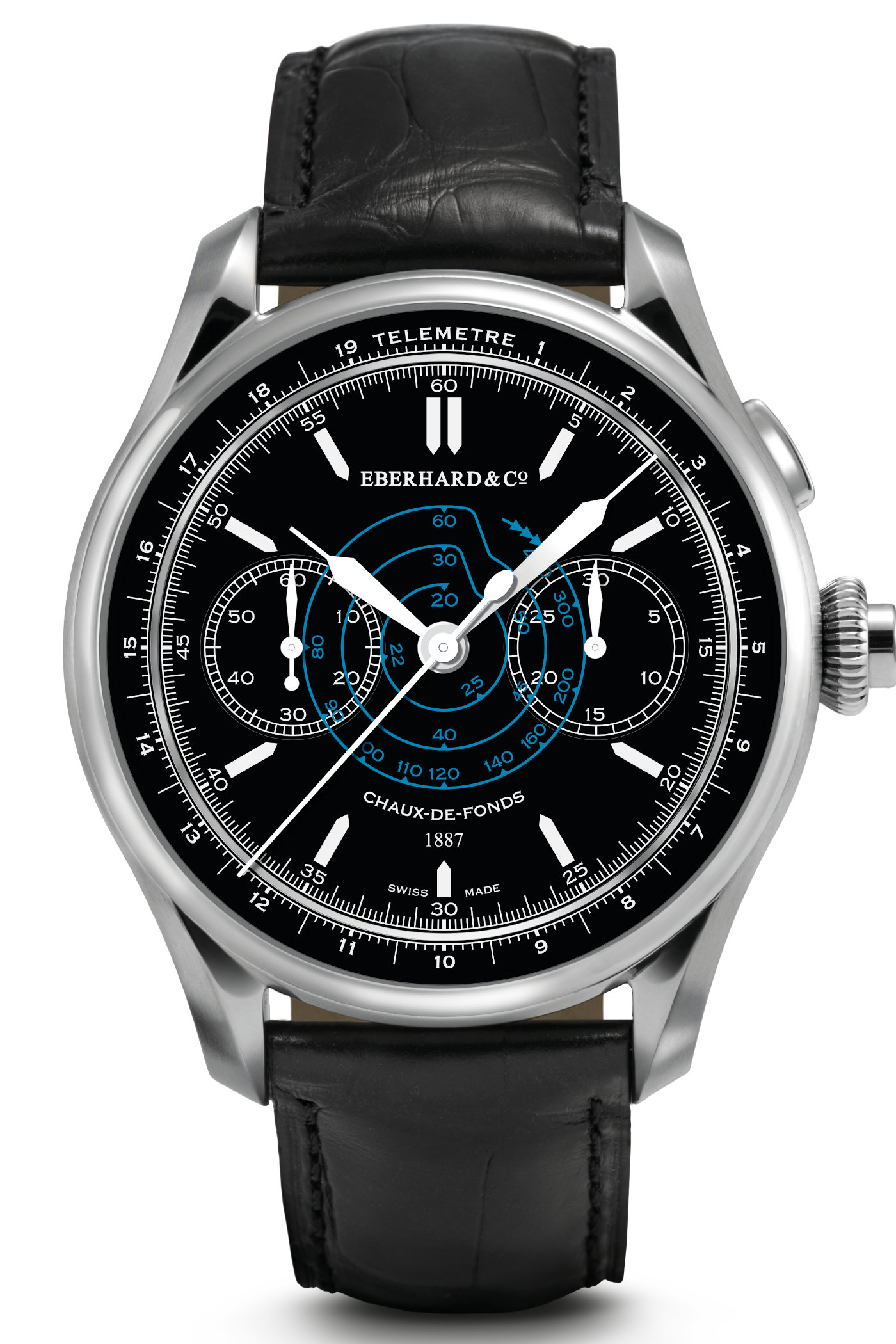
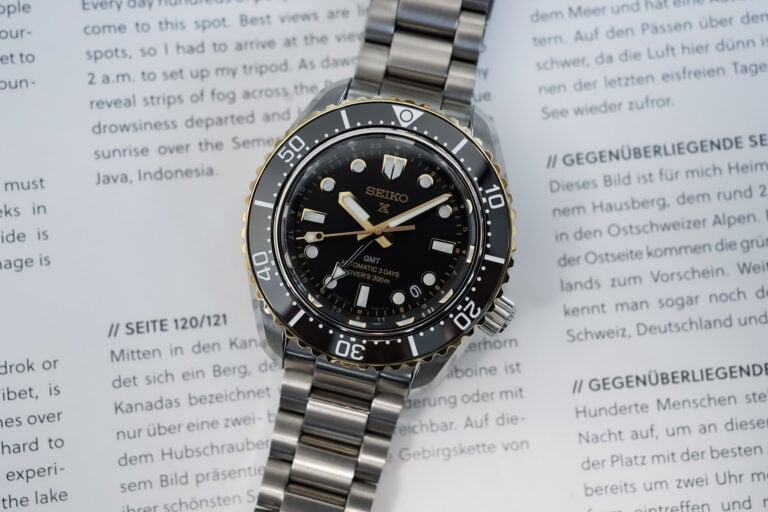
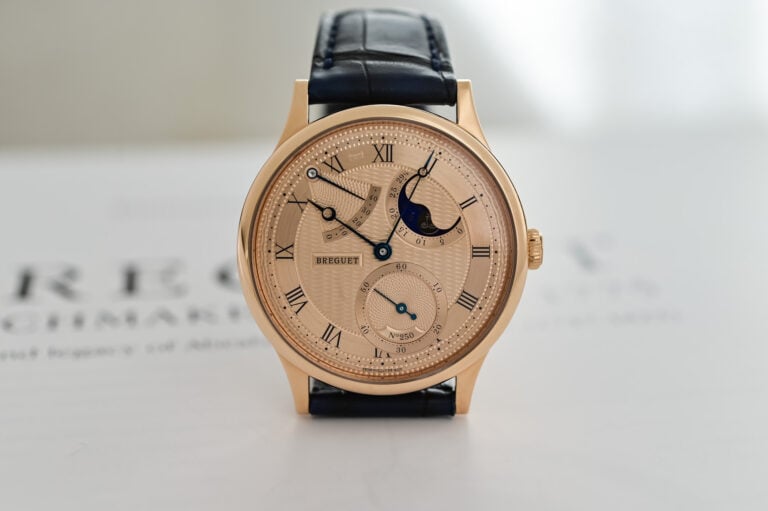
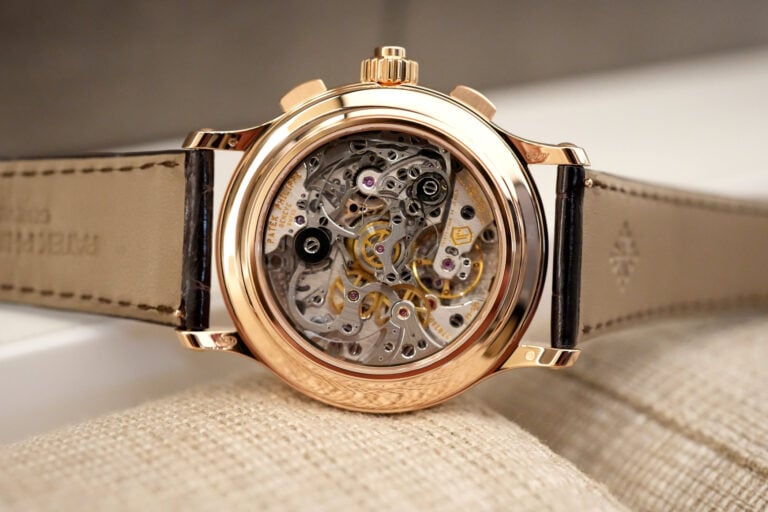
3 responses
Too big! This should be 38mm at most…
Eberhard is notorious for how badly they treat customers, both the end user and their retail outlets. They don’t keep their commitments and their customer service is nonexistent; both of which add to a bad reputation that even their retailing partners can’t deny. Deal with these knuckleheads at your own risk. They’re a waste of time and money.
100% agree with what J. Quincy Magoo said. About a decade ago, I bought an automatic Rattrapante chronograph from an authorized retailer. Within a month of ownership, I dropped the watch and it stopped ticking. I was devastated. Contacted Eberhard as their warranty card stated 10yrs of warranty from purchase. Showed them my receipt and warranty card, and even asked my retailer to contact them. Just like what was mentioned, they did not care about the wellbeing of their products, nor could they care to recommend someone who could help me solve my Eberhard problem. Sad to see that all that they could do now (as with many other brands) is to milk their historical pieces into “modern interpretations”.
In the end, it was my retailer that coughed up the extra cost to help me service my watch into working order. Would I buy from my retailer again? Absolutely. Would I buy another Eberhard? If it’s no longer owned by the Italian family, then most probably yes. And yes, I fell in love with this telemeter. In fact, this is the only model that I could care looking into, since their Rattrapante.